4 Types of Organizational Change
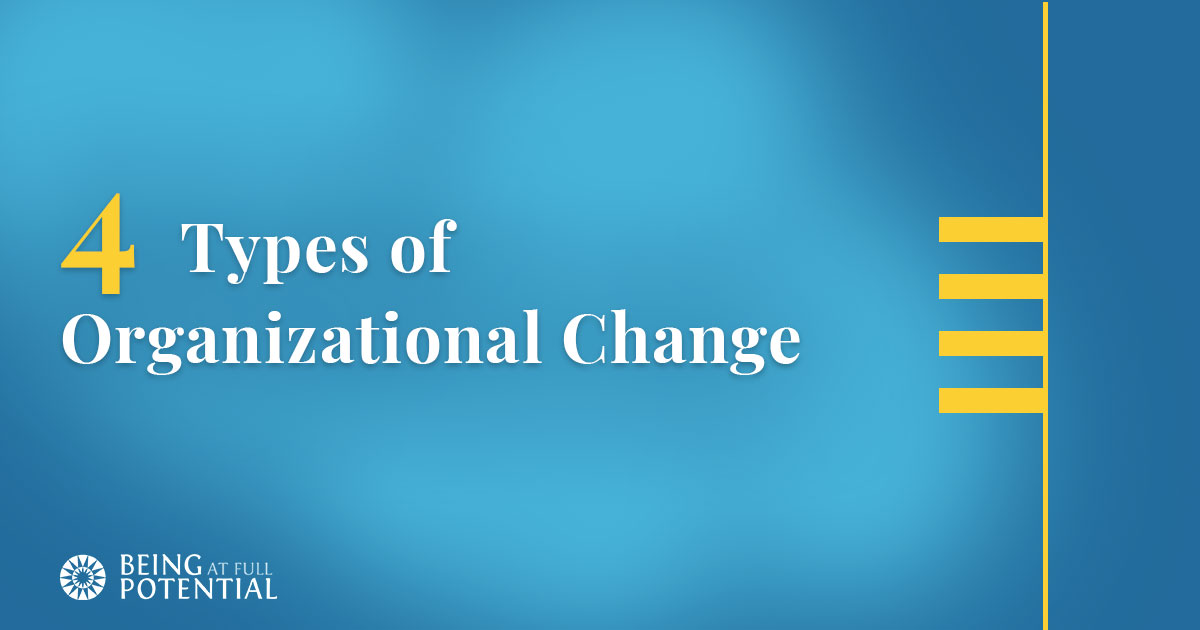
Table of Contents
What are the four types of organizational change?
Strategic Transformational Change
Structural Change
Remedial Change
People-Centric Organizational Change
More articles on change
Organizational change can be a tough nut to crack. Approaches might differ from business to business, but the main fundamentals will remain the same. This blog will take a look at the different types of organizational change and how they might apply to your business.
In the business world, organizational change can be a touchy subject to discuss. People don’t like change, they like consistency. Whether the change is for the good or the bad. But change can be good. It can be a way to stay current and competitive in the business world. But change isn’t for everyone. Some people are early adopters and leaders in change. Others are laggards who will refuse to adopt even the most necessary changes.
It is a known fact that the world is changing at an increasingly rapid rate and that this will continue to affect the way we do business, entertain ourselves, and even the way we communicate with one another. This is why it is important to provide a stable environment for each employee at a company so that they may adjust to the changes and help to ensure that the company is successful. There are many approaches to organizational change, and it is important to be aware of each one and the fantastic benefits that they can provide.
What are the four types of organizational change?
There are many reasons why organizations decide to change the way they do business. This process can be initiated by the organization itself or by an outside agent. This can occur due to cultural, social, behavioral, or technological changes. Organizational change can be a necessary and vital part of maintaining organizational health and growth.
In the business world, change is often necessary to remain competitive and to meet the needs of a dynamic marketplace. Change is often a welcomed part of life and is generally a good thing. However, not all change is good and some organizations have a difficult time adapting to change.
The types of Organizational Change include,
- Strategic Transformational Change
- Structural Change
- Remedial Change
- People-Centric Organizational Change
Strategic Transformational Change
Strategic transformational change management is a process of changing the overall direction of an organization or a group within an organization. Strategic transformational change is often initiated by a senior executive of the organization. Strategic transformational change is often a lengthy process and requires in depth planning and preparation. It is an exercise in creativity and requires a lot of resources and leadership. It is a process that is founded on the idea that every organization has the potential for growth and change. It is an approach that is outcome oriented, with a focus on the desired end result. The key to strategic transformational change is in the process. The process should be aimed at empowering the people who will be involved in the change and inculcating a sense of ownership among them.
Structural Change
When we think of change, we often think of structural change. This is the most common type of change we usually hear about. It involves a complete transformation of the way something works. For example, if a company was in a lot of debt, it might reorganize to cut expenses, improve efficiency, and make it easier to pay off the debt. This type of change is often difficult to implement and is rarely successful.
Remedial Change
Remedial change is the process of repairing something that has already gone wrong. Where is the use of waiting for the mistake to happen and then fixing it? If it’s not broken, don’t try to fix it. Allow the organization to work perfectly with the existing process, procedure, and system. The best way to avoid mistakes is by maintaining a well-organized environment. This way, you can be sure that everything is in its place and will not cause any problem down the road.
People-Centric Organizational Change
The most successful organizational changes are the ones that are implemented in a people-centric manner. People-centric change management focuses on the employees, customers, and other stakeholders, whose mindset and behaviors are going to be affected by the change. During this type of change, the organization focuses on the emotions and intrinsic motivations of these stakeholders. The change management model for this type of change is based on the idea that if the employees and customers are happy then they will buy into your new product or service and adapt to your new policies. At Being at Full Potential we specialize in this approach and have developed a tool to measure People-Centric change according to “Six Organizational Performance Metrics, or OPM’s”:
1. Trustworthiness
2. Customer Orientation
3. Employee Engagement
4. Inventiveness
5. Self-Leadership
6. Getting things done
Trustworthiness
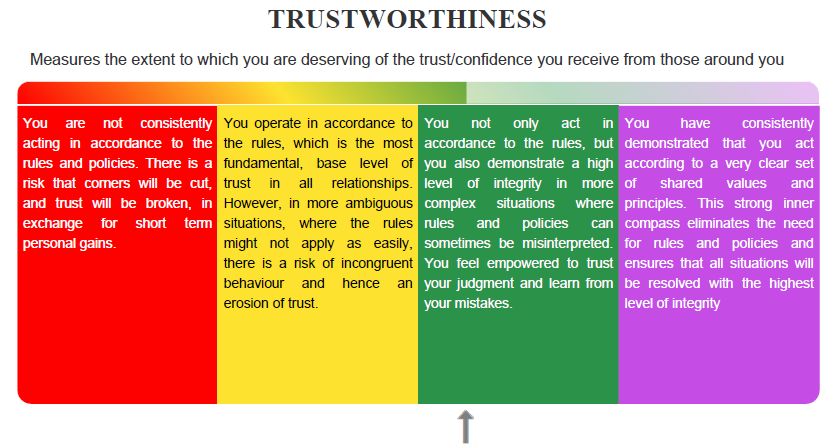
Everywhere we look there a breakdown in TRUST. We don’t know who & what to believe anymore and it’s easy to put the blame on others, be it politicians, business leaders, media organizations, etc…
The thing about TRUST though is that it is not something that exists “out there” or an ideal state that we somehow “deserve” from others. Instead it’s a quality that we must cultivate and practice in our own lives first. There is a dynamic aspect to TRUST. The more we live it ourselves, the more we receive it in return!
This is why I find it helpful to focus on TRUSTWORTHINESS. It brings the responsibility back to myself and what I can do to actively create the experience of TRUST in my relationships.
To what extent are you expressing this quality in your leadership? Considering the following image, where on the spectrum would you be? What would it take for you to move more towards the purple box?
At BEING at Full Potential, these are the kinds of questions we can support you with. Our tools not only measure where you are on this map today, but they also reveal the inner qualities that you can nurture to express even more of your TRUSTWORTHINESS in the future.
Customer Orientation

Of the 6 OPM’s (organizational performance metrics), CUSTOMER ORIENTATION is the one closest to my heart.
As an entrepreneur, who has championed the importance of infusing organizations with deeper Human Potential development for the past 10 years, I know how hard it can be to bring an idea to market when there isn’t yet an explicit need for it.
Working within the purple box of the diagram below, can be a lonely and frustrating experience at times. But as the bridge between our lofty visions and the needs of organizational leaders gets built, we enter into a creative zone. From this place we have given birth to the Human Potential Assessment, culture iceberg, OPM’s, maturity model and much more.
Thank you Andrew Thornton, Laura Saldivar Luna, Tanya Gonzalez, Dr. (HC) Guruvayurappan PV, Dr.Saravanavasan KS, Virginie Helias and many more for trusting BEING at Full Potential and following your innovative spirit!
Employee Engagement
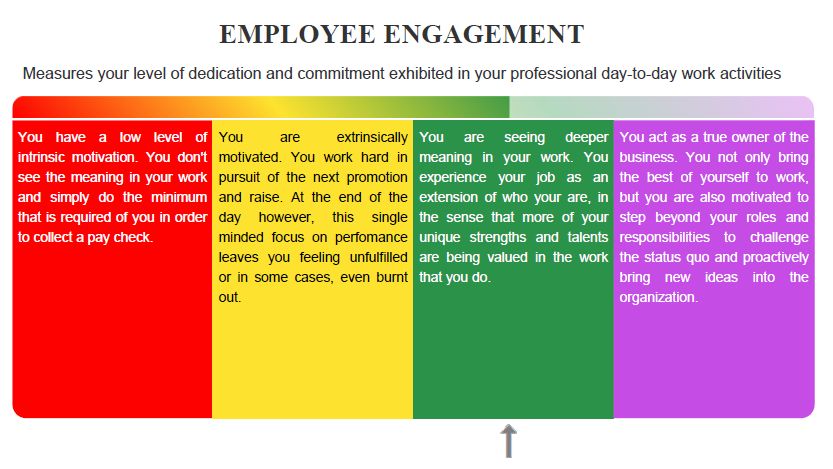
Employee Engagement is the reason why, 10 years ago, I felt compelled to develop solutions that would make it easier for teams and organizations to unleash the unexpressed potential in their people.
It must have been around 2008, while I was still working at Procter & Gamble when the light bulb went on. During the deployment of the latest employee engagement survey, the HR team had identified a major new insight in the data. By far the #1 driver of employee engagement was a sense of PURPOSE & MEANING in a person’s work.
This was groundbreaking compared to the conclusions being drawn in previous years. For the first time they had concrete evidence that intrinsic motivators were far more important to the younger generation than extrinsic factors like pay, status, career development…However, the survey did not provide much insight into the underlying drivers of meaningful work.
Intuitively I knew that PURPOSE & MEANING were the result of a person having the opportunity to fully express their human potential (while aligning it to the priorities of the organization). But I had no way to prove it and without “the data” no new action could be taken. This is when, together with Sujith Ravindran, we decided it was time to create a tool that would measure the immeasurable.
In 2013 we gave birth to the Human Potential Assessment and BEING at Full Potential. Since then, we have served over 50 organizational clients and 8000+ individual users. We now have the tools and methods to work on the deeper human levers of organizational performance, and in doing so, we inevitably create breakthroughs in Employee Engagement, Trustworthiness, Inventiveness, Customer Orientation, Self-Leadership and Getting Things Done.
Inventiveness
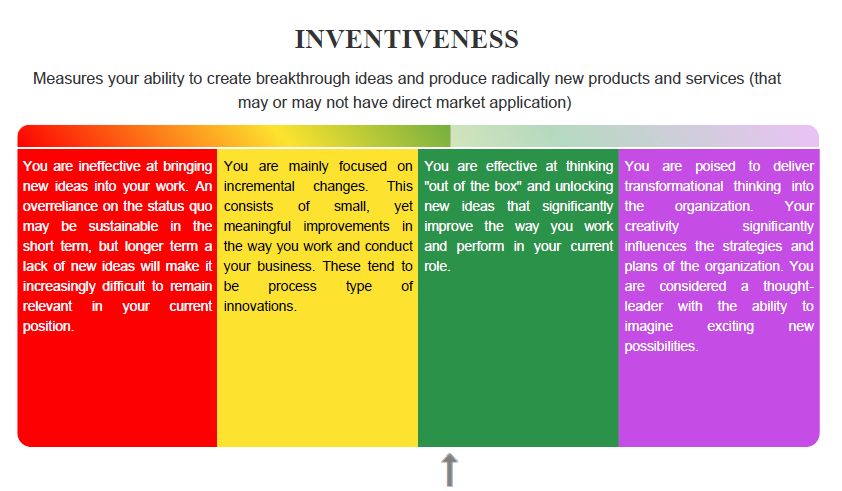
Let’s talk about INVENTIVENESS – our ability to create breakthrough ideas and produce radically new products and services (that may, or may not yet, have direct market application).
To what extent are you expressing this quality in your leadership? Considering the following image, where on the spectrum would you be? What would it take for you to move more towards the purple box?
At BEING at Full Potential, these are the kinds of questions we can support you with. Our tools not only measure where you are on this map today, but they also reveal the inner qualities that you can nurture to express even more of your INVENTIVENESS in the future.
Self-Leadership

A growing number of people are feeling the call to step into a new paradigm of leadership – one that is motivated by being in service rather than being in power.
This transition in how we lead recognizes that there are limits to what we can control and influence when it comes to the thinking and actions of others.
We may not be able to change these external circumstances, but when we turn our focus inwards, and reflect on how we can best respond, a multitude of choices start to open up.
This is what we refer to as SELF-LEADERSHIP.
Considering the following image, where on the spectrum do you see yourself as a leader? What would it take to move more towards the purple box?
At BEING at Full Potential, these are the kinds of questions we can support you and your organization with. Our tools not only measure where you are on this map today, but they also reveal the inner qualities that you can nurture to express even more of your SELF-LEADERSHIP in the future.
Getting things done
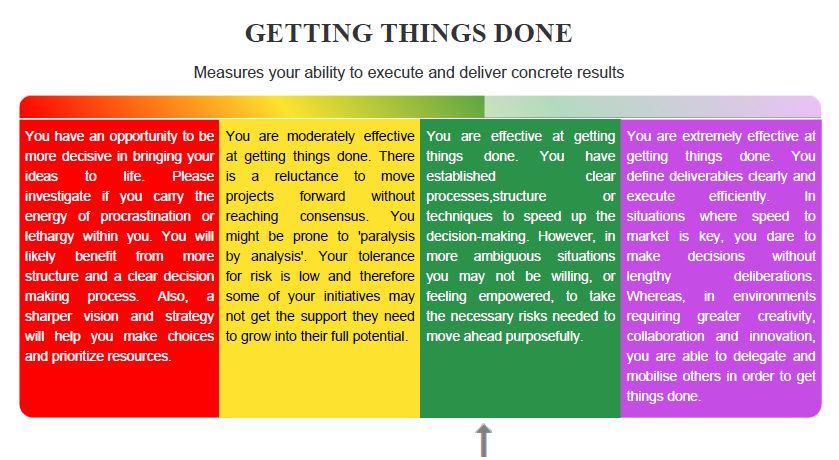
At BEING at Full Potential we talk a lot about the BEING and the importance of working on ourselves but that doesn’t mean we don’t get things done. In fact, it’s quite the opposite, I’m always amazed how much can be created and built in such a short period of time when our hearts are fully engaged. Recently I have experience this with Peter Leong, Andrew Thornton, Fabienne Locher, Lakshmi Arora, Neelanjana Maity, Shyaamlal N N, Dinesh kanna B , Khuze Siam and the team at Siam Computing
Hence, our motto: “When the BEING comes alive, the DOING thrives”.
Considering the following image, where on the GETTING THINGS DONE spectrum do you see yourself as a leader? What would it take to move more towards the purple box?
At BEING at Full Potential, these are the kinds of questions we can support you and your organization with. Our tools not only measure where you are on this map today, but they also reveal the inner qualities that you can nurture to GET THINGS DONE with more ease and grace.
A CEO's Transformational Journey
This short video brings to life an example of what People-Centric change looks like when role-modelled by the CEO. Which Organizational Performance Metrics are most expressed in this litttle story?
At Being at Full Potential, we believe in people centric-organizational change by driving people towards BEING rather than DOING. The question that always comes up is “what is the difference between BEING and DOING?” and “how do the BEING initiatives impact the performance of my organization?” To know more about this, read our article on The business case of BEING.
More articles
- Creating transformational spaces within the business context – 5 Lessons
- Transformational Leaders in Transformational Times webinar series – A harvest of deeper insights
- Human Potential Methodology for organizational transformation
- Human Potential Realization. A £400M opportunity…If only we can align what we KNOW with what we DO
- Leading Evolutionary Change in Organizations through HUMAN POTENTIAL Realization
- What is Transformational Leadership: Definition and how to apply it

